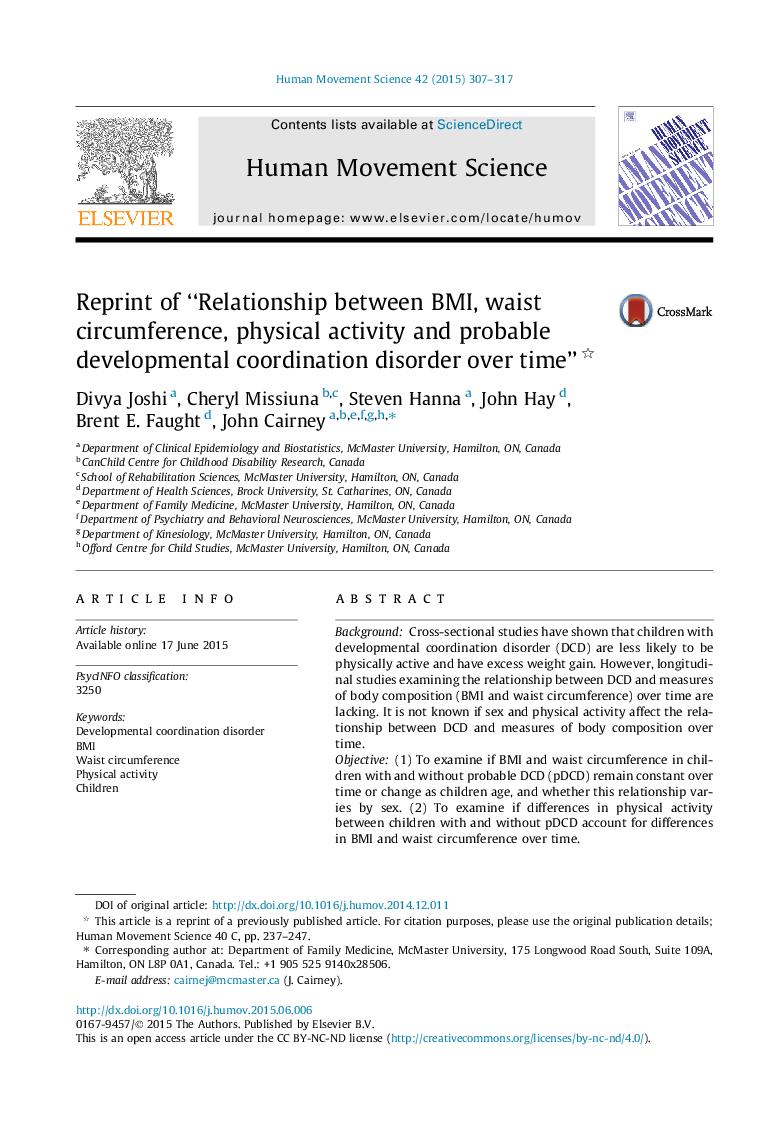| Article ID | Journal | Published Year | Pages | File Type |
|---|---|---|---|---|
| 928250 | Human Movement Science | 2015 | 11 Pages |
•We examine changes in BMI and waist circumference in children with pDCD over time.•BMI and waist increase over time to a greater extent in children with pDCD.•Boys with pDCD have a more rapid increase in BMI and waist than girls.•Physical activity is negatively and independently associated with BMI and waist.
BackgroundCross-sectional studies have shown that children with developmental coordination disorder (DCD) are less likely to be physically active and have excess weight gain. However, longitudinal studies examining the relationship between DCD and measures of body composition (BMI and waist circumference) over time are lacking. It is not known if sex and physical activity affect the relationship between DCD and measures of body composition over time.Objective(1) To examine if BMI and waist circumference in children with and without probable DCD (pDCD) remain constant over time or change as children age, and whether this relationship varies by sex. (2) To examine if differences in physical activity between children with and without pDCD account for differences in BMI and waist circumference over time.MethodsPhysical Health Activity Study Team (PHAST) data were used for this longitudinal analysis. At baseline, a total of 2,278 (pDCD = 103) children aged 9–10 years were included in the analysis. The total follow-up period was five years. Mixed-effects modeling was used to estimate change in body composition measures in children over time.ResultsChildren with pDCD have higher BMI and waist circumference compared to typically developing children, and this difference increased over the study period. The relationship between pDCD and BMI over time also varied by sex. A similar trend was observed for waist circumference. Boys with pDCD were found to have a more rapid increase in BMI and waist circumference compared to girls with pDCD. Physical activity had neither a mediating nor a moderating effect on the relationship between pDCD and measures of body composition. However, physical activity was independently and negatively associated with measures of body composition.ConclusionspDCD is associated with higher body mass and waist circumference, both important risk factors for cardiovascular disease, type 2 diabetes, and psychological problems and other health conditions.
